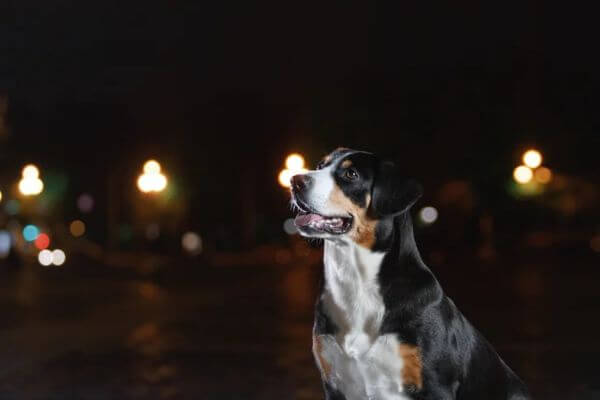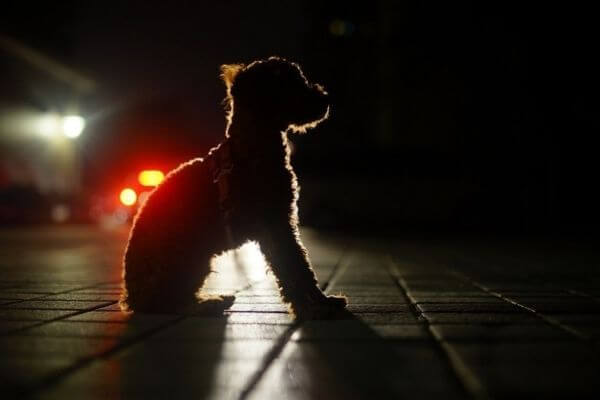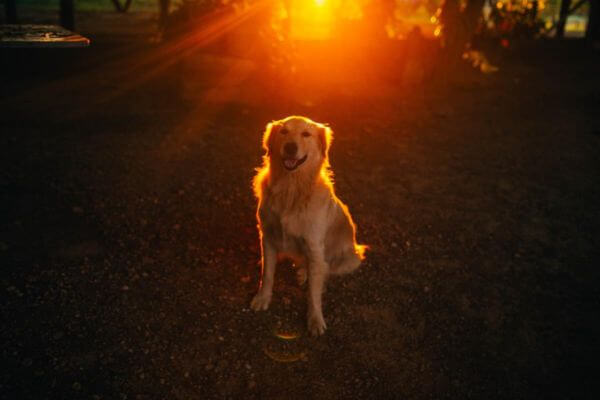The well-being of our furry friends is always a top priority, especially regarding their safety and health. As pet parents, we often wonder about the capabilities of our dogs, particularly in low-light situations. At the same time, it’s common knowledge that dogs have a better sense of smell and hearing than humans. Their visual abilities in the dark are often a topic of curiosity and debate.
In this article, we’ll dive deep into the topic of dog night vision and explore the truth behind the common beliefs surrounding it. We’ll examine the factors that affect dogs’ visual capabilities in low-light environments and provide valuable tips and precautions to ensure our pets stay safe and healthy.
Whether you’re a seasoned pet parent or a new dog owner, this article will provide valuable insights into what dogs see in the dark and how we can best care for our furry friends.
Key Takeaways
- Dogs have better senses of smell and hearing than humans, but their night vision could be better than cats due to a smaller amount of light-sensitive rods and a thinner tissue called tapetum lucidum.
- Dogs’ color perception is weaker than humans, and they see primarily in blue-violet, yellow, and shades of gray. Breed differences can affect their visual abilities, with some breeds having a wider peripheral field of vision than others.
- Dogs’ visual abilities include motion detection, light sensitivity, visual perspective, visual field of view, depth perception, visual acuity, color perception, and form/shape sharpness. Factors affecting night vision in dogs include the tapetum lucidum and the types of rods and cones in their retina.
- Pet owners should provide adequate lighting solutions in areas where dogs may need to navigate at night, use nightlights or motion-activated lights, and consider potential hazards that may risk their dog’s safety in low-light situations, such as sharp objects or uneven surfaces. Avoid leaving dogs in unlit areas for extended periods and take precautions to improve their nighttime safety and overall well-being.
Dog Night Vision Abilities
Dogs possess visual abilities that allow them to see better than humans in low-light situations. These include motion detection, light sensitivity, visual perspective, visual field of view, depth perception, visual acuity, color perception, and form/shape sharpness.
However, cats’ night vision is better than dogs’ due to a smaller amount of light-sensitive rods and a thinner tissue called tapetum lucidum.

Color perception is weaker in dogs than in humans, and they are seen primarily in blue-violet, yellow, and shades of gray. Additionally, breed differences can affect dogs’ visual abilities, with some Mexican breeds having a wider peripheral field of vision than others.
Night vision tests have shown that dogs can see better in low-light conditions, but they cannot be seen in pitch-black areas. Therefore, pet parents should avoid leaving their dogs in very dark rooms, especially if they are prone to tripping or have difficulty navigating their home.
Factors Affecting Night Vision
Canines’ specific biological structures and physiological characteristics contribute to their ability to perceive visual information in low-light conditions. One such structure is the tapetum lucidum, a thin tissue behind the retina that reflects and amplifies light. This allows dogs to see better in low light situations than humans, but not as well as cats, who have a denser layer of rods and a larger tapetum lucidum.

In addition to the tapetum lucidum, the types of rods and cones in a dog’s retina also play a role in their night vision. Dogs have a higher percentage of rods, which are more sensitive to light and help with motion detection, while their cone cells, responsible for color perception and visual detail, are fewer. This results in a limited ability to distinguish colors and less visual acuity in low-light conditions.
Despite these limitations, dogs can still rely on their sense of smell and motion detection to navigate the dark.
Precautions and Care Tips
Pet owners should take certain precautions and follow expert care tips to ensure their furry companions are safe and healthy in low-light situations.
It is essential to provide adequate lighting solutions in areas where dogs may need to navigate at night, such as hallways or staircases.
Nighttime safety can be improved by using nightlights or motion-activated lights, providing dogs with enough light to see their surroundings without causing discomfort or disturbing their sleep.

In addition to lighting solutions, pet owners should consider the physical environment and potential hazards that may risk their dog’s safety.
For example, sharp objects or uneven surfaces can be challenging to see in low-light situations and cause injuries or accidents.
Pet parents should also avoid leaving their dogs in unlit areas for extended periods, as this can be stressful and potentially dangerous for their furry companions.
By taking these precautions and following expert care tips, pet owners can help improve their dog’s nighttime safety and overall well-being.
SEE ALSO:
Barking Hound Village: The Best Place for Dog Lovers
The Pervasive Problem of Black Dog Syndrome
Why You Should Adopt A Caring Senior Dog
Conclusion
As we’ve journeyed through the fascinating realm of canine night vision, it’s clear that our four-legged friends possess an incredible suite of visual adaptations. From the reflective tapetum lucidum to their increased rod cells, dogs have evolved to see in dim light, hinting at their ancestral nocturnal habits.
But beyond understanding these scientific wonders, a more profound bond must be nurtured. Each time our dogs gaze into the evening shadows, they tap into an ancient lineage—a connection we’re privileged to witness.
At Bone Voyage Dog Rescue, our mission isn’t just about understanding dogs but celebrating and supporting them. As you’ve delved deeper into the world of canine vision, consider stepping into their world more tangibly. How about adopting a loyal companion to explore both day and night together?
By adopting from Bone Voyage, you’re not just gaining a pet; you’re embracing a legacy, a story, a pair of eyes that see the world in ways we can only imagine. Step into their world. Give a dog a forever home. Join us on this incredible journey!
Frequently Asked Questions
Can dogs see better in the dark than cats?
While cats have superior night vision due to their high number of rods and larger tapetum lucidum, dogs still have better night vision than humans. This is due to their evolution as nocturnal hunters. However, dogs’ visual acuity and color perception are inferior to cats.
Do all dog breeds have the same level of night vision?
Night vision diversity exists among dog breeds, with some having enhanced vision. Factors such as light-sensitive rods in the retina and tapetum lucidum affect a dog’s night vision. However, all dogs rely primarily on their sense of smell to navigate.
Can dogs perceive colors like humans do?
Contrary to popular belief, dogs cannot perceive colors like humans do. They have a dichromatic vision that allows for limited color perception in blue-violet and yellow shades. Understanding dogs’ color perception and effective training techniques are crucial for their vision health.
Is it safe to regularly leave dogs in dark rooms?
Leaving dogs in dark rooms for extended periods can adversely affect their behavior and pose health risks. Dogs rely on their sense of smell more than sight but still need adequate lighting for their well-being.
How does a dog’s sense of smell relate to their visual abilities?
Smell vs. Vision: Connection is essential to a dog’s world perception. While their night vision is better than humans, dogs rely primarily on their sense of smell, and training can improve their visual abilities in low-light situations.
Join the Journey to Save Lives! Support Bone Voyage Dog Rescue Today
